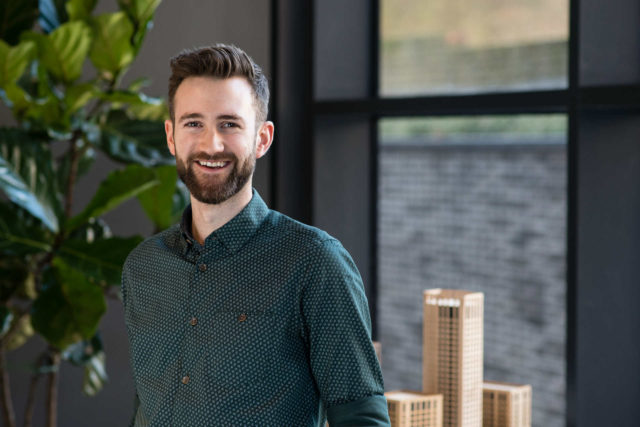Lucy de Oliveira should have had a rewarding career and decades of happiness ahead of her, but in February 2017 the “bright, bubbly” student nurse took her own life. She was just 22.
Tragically, Lucy’s story is not an isolated incident. Between July 2016 and 2017, an estimated 95 students in higher education committed suicide in England and Wales. And according to data released by the Office for Students, the proportion of undergraduate entrants reporting a mental health condition has soared in recent years, increasing from 0.6% in 2010-11, to 3.1% in 2017/18.
Work pressures, financial stress and the challenges associated with moving away from home have all been blamed for this crisis, and Lucy’s mother, Liz de Oliveira, believes they each play a part.
“Student mental health is a huge problem,” the former barrister tells Work in Mind. “These are vulnerable young adults, who are often leaving home for the first time to live in a city they don’t know. They may be under financial pressure, then there’s the pressure to perform academically too.
“They are trying to find their way in life independently for the first time and often feel the need to fit in, look the part, wear the right clothes and go to the right places. They need guidance, support and decent accommodation.”
Architect Ben Channon wholeheartedly agrees. He is an associate and mental wellbeing ambassador at Assael Architecture, who has tirelessly researched how buildings affect our moods and minds. He believes the buildings in which we spend our lives can have a big impact on our mental wellbeing, and says this is keenly felt amongst the student population.
“Student wellbeing is a major issue,” says Channon. “University is a time of immense change for undergraduates, which comes with associated social anxieties. They are expected to make new friends, and work out who they really are as people. The academic expectation is now incredibly high too.”
While many universities are working hard to improve their pastoral care, Channon believes architecture and design also has a valuable role to play.
“The built environment can have a huge impact on mental health,” explains Channon. “Our sense of pride is impacted by the buildings we live and work in. If we don’t feel pride in those places, it affects how we feel and behave. When providing student housing, we have a responsibility to create environments that support good mental wellbeing.”
The need for personal space
Channon believes it’s vital that student accommodation answers our deep-seated need for personal space.
He says, “We’re biologically programmed to need personal space, and research suggests that when it is reduced it can impact your brain. It activates your fight or flight response, which has a huge impact on stress levels.
We’ve all experienced going into a tiny supermarket where the aisles are too narrow and the ceilings are low. It makes you feel claustrophobic and agitated, because your sense of personal space is removed.
“Architecturally-speaking, we need to embrace daylight, provide clean air and create comfortable spaces that work for students. It may cost more to put bigger windows and higher ceilings into student housing, but research suggests people are prepared to pay for environments that make them feel better.
“We also need our buildings to encourage us to engage with our surroundings, sparking moments of joy through colour or detail. Bringing in plants is important too – we know they’re a powerful way to improve happiness.”
Fostering pride and autonomy
Channon also believes that architecture needs to nurture a strong sense of self, fostering pride and community amongst students.
He explains, “If you don’t have pride in where you live and work, it can affect your self-esteem. Architecture and design need to give people power over their own lives too – if it doesn’t, it can be demeaning. I’ve seen student housing without a proper oven or even a hob, which strips away students’ autonomy to choose when and how they eat.
“Removing that control can erode their happiness and mental health and also impact on their diet. That affects their physical and mental health in turn. Laundry is another example. Enabling students to wash their clothes in or near their home, day or night, may see like a small thing but it can have a big impact.”
The need for refuge
Channon adds that student accommodation also needs to take into consideration the need for safe spaces, where undergraduates can seek refuge from the pressure that goes hand-in-hand with their studies.
He explains, “Students often spend a lot of time working in their bedrooms, but if your room is both your safe space and your workplace then that can create massive conflict. There’s no separation, so it becomes hard to switch off. That’s why student accommodation needs communal safe spaces, which are designed to promote relaxation and social interaction. This includes providing amenities like gyms and cinema rooms, where they can forget about work.”
A shift in student culture
Architect Ryan Manton agrees that social spaces are increasingly important to student wellbeing, and that design needs to reflect cultural shifts within the undergraduate community. He is Programme Director at The Class of 2020, a think tank shaping the future of living, learning and working in university cities.
He tells Work in Mind, “Traditionally, in a university hall of residence the kitchen was the centre of activity, but now undergraduates are drinking less and there are more international students. This means the stereotypical student culture is changing. As a result, the new developments might include study areas, cinema rooms, gyms and break out spaces, as well as kitchens.
“In the past, halls of residence often had linear designs, with dormitories that led off corridors. They weren’t designed with socialising in mind, but now developers look closely at how interaction occurs in a building, and where social spaces are situated. It’s about balancing a sense of community with a sense of privacy.”
An economic force for good
Manton believes that when it comes to keeping wellbeing in mind, the relatively recent commercialisation of university accommodation is proving a force for good.
He explains, “A decade or two ago, the universities themselves were often the driving force behind student developments, but now we have external companies selling purpose-built student accommodation as a hospitality product. These new developments are quite different spaces, and businesses are being more innovative about what they are doing. It’s no longer just about function, it’s about offering something else.
“Student accommodation is moving particularly fast with wellbeing, because students are more vulnerable. Most developments are created from scratch and businesses know there’s a big responsibility to create spaces that foster wellbeing and encourage social interaction. It’s a unique area, and a very specific challenge.”
To find more content on student mental health, click here.
Ben is an Associate and WELL AP at Assael Architecture. His first book, Happy by Design, was published in October 2018.

Ryan Manton is Programme Director at The Class of 2020 Foundation. On 6 and 7 November, The Class of 2020 hosts the biggest conference in the industry in Berlin, The Class Conference 2019: Blended Living. Experts will discuss in depth the challenges and opportunities that blurring boundaries create for the future of living, working and learning.

Sophie Barton
Sophie Barton is our Features Editor. She a journalist and editor with 20 years’ experience in the national media, specialising in wellbeing and lifestyle.




